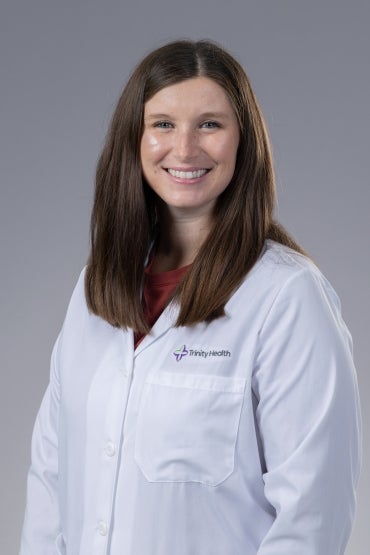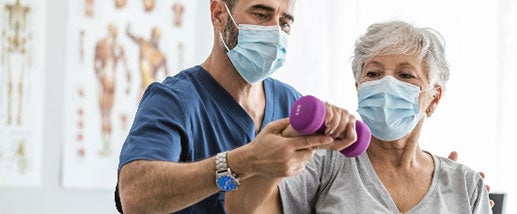Ask a Doc: Are Baby Boomers at Higher Risk of STDs?
July 11, 2025
By: Alyssa Plotts
Categories: Primary Care, Ask a Doc, Infectious Disease
Rates of sexually transmitted diseases (STDs) and infections (STIs) are increasing among Baby Boomers, individuals born between 1946 and 1964. Lack of sexual education, safe sex practices and other factors are contributing to the spike.
Dr. Julie Masters shares ways you can protect yourself and loved ones.

Julie Masters, DO
Obstetrics and Gynecology
Trinity Health IHA Medical Group, Obstetrics & Gynecology - Rochester Hills
Accepting new patients
View Details
Michelle Aue, PA-C
Physician Assistant
Trinity Health Medical Group, Primary Care - Rivertown
Accepting new patients
View DetailsWhat are the most common STDs seen in the Baby Boomers age group?
Julie Masters, DO: When you look at the rates of STIs from 2012 to 2022, including chlamydia, gonorrhea and syphilis, cases in people ages 55 and older cases increased sharply. The Centers for Disease Control and Prevention report that chlamydia cases in this age group tripled from 6,084 to 19,776. Gonorrhea cases increased more than four times. Syphilis cases rose seven times.
Are Baby Boomers at increased risk and why?
Julie Masters, DO: Older adults are living longer and healthier lives. They are also stronger and more sexually active. Also, with the help of erectile dysfunction (ED) drugs and therapy treating hormonal symptoms, more elderly adults are more interested in sex (per AARP).
More adults are living in senior living communities. This leads to greater social awareness and easier sexual encounters. Older adults now have multiple ways to meet people and tend to have increased dating opportunities with multiple partners.
People are living longer and an estimated 40 percent of people ages 65-80 are sexually active. Two-thirds of that age group are interested in sexual contact (AARP, 2024). Better medications for ED and hormone therapy and vaginal dryness remedies are increasing sexual activity, libido and satisfaction.
Also, older adults likely have not gotten the sex education that teenagers and young adults get today. Many older adults lack the information or knowledge regarding STI transmission, symptoms or prevention. Reaching this group and helping educate them about STIs and the high risks they face is important.
What steps can someone take to prevent risk?
Julie Masters, DO: Safe sex practices and sex education became more prominent in the 1980s. Before the 80’s, people did not learn about safe sex like later generations. Teaching safe sex practices and condom usage can help.
What about those living in a senior living community? How can their loved ones and families help?
Julie Masters, DO: More awareness and education can help this group. Open discussions about sex and STI risks are also important.
Providing sex education materials and information to loved ones is important. Having these resources at senior living centers and nursing homes is also helpful.
Do symptoms differ in older people? What should they look out for?
Julie Masters, DO: Symptoms of STIs might not be obvious. They can also look like symptoms of other health problems. Because of age and other conditions, STI’s may not be on the forefront of a physician’s mind.
Many physicians either don’t ask about patients’ sexual activity or assume they are not sexually active. Patients may feel shy about discussing this topic with their doctor. Therefore, it is important for doctors and patients to ask relevant questions about sexual activity.
Does menopause/post menopause change risk or symptoms?
Julie Masters, DO: STIs can mimic menopausal symptoms especially in the vagina. As more women live longer than men, they may have more sexual partners and share partners more often. Older patients also have a harder time clearing infections and can also be more susceptible to contracting them. A worsening immunity with age can cause this.
How can preexisting conditions impact STDs or STIs?
Julie Masters, DO: Patients with weak immune systems are more likely to get infections. They may also find it harder to treat STIs.
What symptoms should a doctor’s visit prompt?
Julie Masters, DO: Pain in the vagina or bladder, vaginal discharge and any genital symptoms are important. Also, note any viral symptoms after starting new sexual activity.
What should older patients ask their primary care doctor about sexual health?
Michelle Aue, PA-C: Older adults might be reluctant to discuss sexual concerns because of stigma. However, as providers, we cannot help if we do not know the whole story. Trust and communication, both provider and patient, are key to achieving the best care. People should talk openly about sexual concerns at their physical exam or at least once a year.
There are no set screening guidelines for patients for STDs older than 25 unless having symptoms. Many older patients may avoid using condoms because they are not worried about pregnancy. However, this means they lack protection against STDs.
Do you or a loved one have questions about your sexual health?
Start with a visit to your primary care doctor.
Bunis, D. (2018, May 3). Older sex: Two-thirds of adults over 65 still interested. AARP.
Centers for Disease Control and Prevention. (n.d.). NCHHSTP AtlasPlus: Charts. U.S. Department of Health & Human Services. Retrieved July 11, 2025




